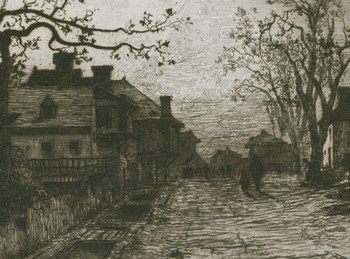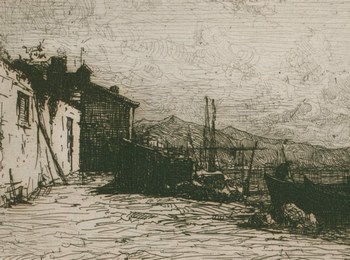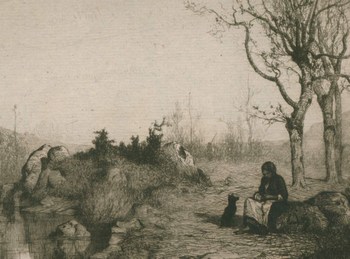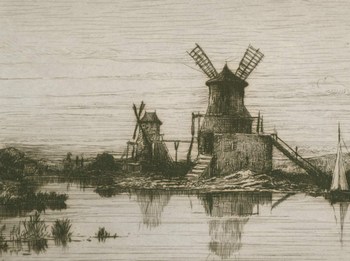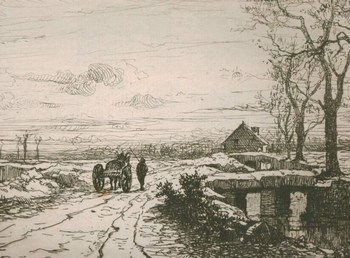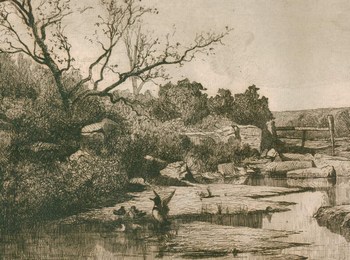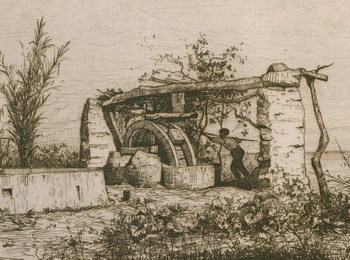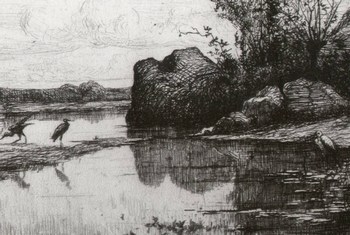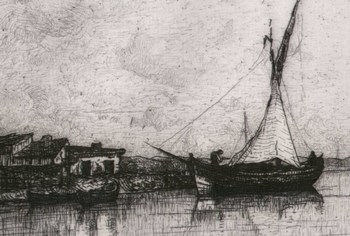|
The earliest etching by Appian
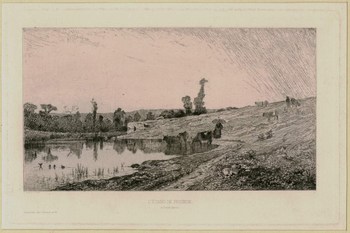
|
|
L'ETANG DE FRIGNON
(Jennings 1, Prouté 1 ( I - II / III )
This is first plate published by Appian and it is in his early
style.It is an early state already with the title (II) but without (
before?) the address of printer Delâtre on the right.In
the last state ( III) the title was erased).
The lake of Frignon is situated in Creys were Appian settled in
1861.The print was soon after published in the "Gazette des
Beaux-arts" in 1862.
23 by 15 cm, Impression in a full sheet with 10 cm margins.

This print is sold!
|
| |
|
A group of excellent impressions in final state
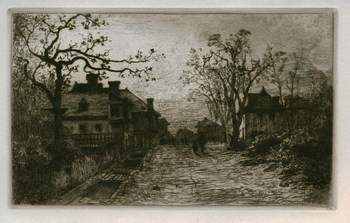
|
|
RUE DU VILLAGE D'ARTEMARE (AIN) AUTOMNE 1871
Un soir a Artemare
( J.29, P.33 )
Appian discovered the village of Artemare in 1871 and stayed there
for several months. This is one of two autumnal street scenes in
Artemar etched in 1871.
This print was exhibited at the Paris Salon in 1874. According to
Leipnik (1924) Appian 'did noting of note until 1872, when this
brilliant landscape caused a sensation.

This print is sold! |
|
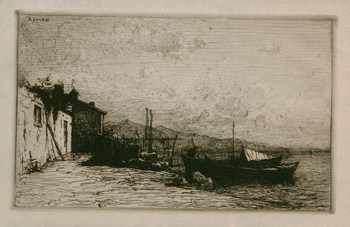 |
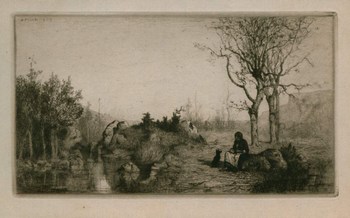 |
|
CABANES DE PÊCHEURS SUR LES CÔTES D'ITALIE 1876
( J.37, P.42 )

This print is sold! |
BORDS DU RUISSEAU A ROSSILLION (AIN) 1867
( J.21, P.24 )
Another echo of Appian's
earliest style.
Appian stayed in Rossillon in 1866 and 1867.

This print is sold! |
|
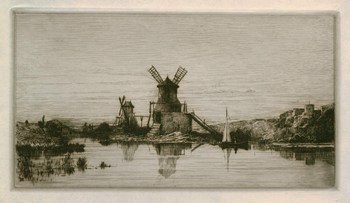 |
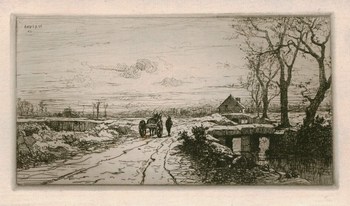 |
|
SOUVENIR 1864
( J.9, P.10 )
Unusual composition for Appian, as it lacks movement. The eye
remains fixed on the centre, with the small windmill balancing the
boat on the other side. Circa 1864 |
CHEMIN DE L'ETANG DE FRIGNON (ISERE)
1877
( J.40, P.45 )
A winter scene |
|
Measures between 10-13,50 by 19-24 cm, Excellent impressions
with nice plate tone on laid paper. In a sheet with 1 cm margins.
|
| |
|
|
Large
etching of the sources of the Albertine
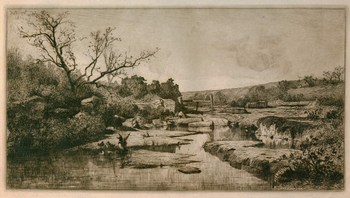 |
|
LES
SOURCES DE L'ALBARINE (AIN)
1870
( J.26, P.29 V/V )
Etched after the painting exhibited in the 1870 Paris Salon with the
title Source de L'Albarine en Automne. Appian e'xhibited the print
in the 1872 Paris Salon.
This
is a very large print for Appian.
37 by 20 cm on plate border.
With full plate border and 1 cm margins.
|
| |
|
A view on the Italian coast
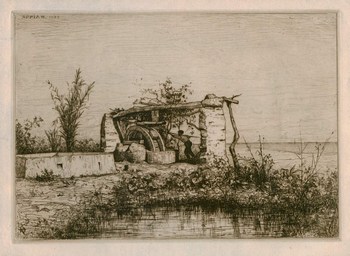 |
|
UNE
NORIA A BORDIQUIER (ITALIE) 1873
( J.33, P.37 )
Exhibited in the Paris Salon.
This is a very unusual subject for Appian, but it is, nonetheless, a
strong image.
Bordighera is on the Italian coast between Monaco and San Remo
This
is a larger print.
29 by 20,5 cm on plate border.
With full plate border and 1 cm margins. |
| |
|
A rare first state!
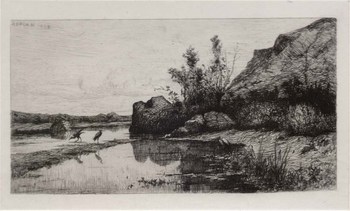 |
|
MARAIS DE LA BURBANCHE (AIN) 1868
( J.23, P.26 )
Etched after the painting exhibited in the 1868 Salon with the title
"Temps gris; Marias de la Burbanche (AIN). Appian exhibited the
print at the 1869¨Paris Salon.
"One of the loviest and most perfect bits of quiet landscape of a
melancholy kind I ever met with. Nothing can be more harmonious than
this etching; it affects the mind like music." (Comment of Hammerton
in 1880)
This
first state before the letter (publishers addresses) was acquired
from the famous Paris print seller Prouté in 1904, ancestor of Paul
Prouté who wrote his catalogue in 1968. A rare valuable state of
this excellent work.
23,50 by 13,5 cm on plate border.
In a full sheet with 10 cm margins.
|
| |
|
Splendid etching from the Cote D'Azur in early impression
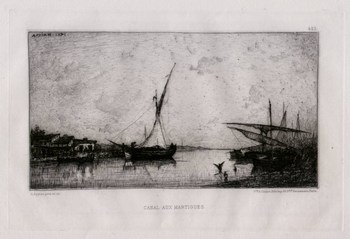 |
|
CANAL AUX MARTIQUES 1875
( J.41, P.36 II / IV )
Appian visited Martiques (Bouches-Du-Rhône) in 1874 and returned
many times.
A painting with this subject was presented at the Salon in 1875 and
the etching was presented in 1877.
This second state was published in "L'iIllustration Nouvelle" in
1878.
16 by
24 cm on plate border.
In a full sheet of watermarked laid paper with 10 cm margins.

This print is sold!
|
| |










